We decided to call by Sheringham Park because at this time of year, the rhododendrons and other flora are out in full force.
About Sheringham Park
Sheringham Park is a landscape park and gardens near (unsurprisingly!) the town of Sheringham, Norfolk, England.
The park surrounds Sheringham Hall, lying mostly to its south. The freehold of the hall is owned by the National Trust and is privately leased on a long leasehold.
There are fine mature woodlands and a large variety of rhododendrons and azaleas.
In the early 20th century, Henry Morris Upcher obtained rhododendron seeds of various types from plantsman Ernest “Chinese” Wilson.
Plants from this source which can found at the garden include Rhododendron ambiguum, calophytum and decorum, among others.
Many other species of tree and shrub are represented in the garden, including fifteen kinds of magnolia, large specimen pieris.
Among the other trees are maples, acers, styrax, eucryphia, pocket handkerchief tree davidia involucrata and a fine example of the snowdrop tree.
Several overlook towers provide good views over the plantations, and of the nearby coast and surrounding countryside
Images from the visit
The flowers I captured were:
- Azaleas
- Forget-me-nots
- Foxgloves
- Rhododenrons
Photography intent – trying different things
I took my Nikon Z7 and 24-120 lens with the intention of doing things a little different…
In my mind, this included:
- Shooting with wider apertures
- Zooming in rather than holding the camera up close trying to do macro (when my lens isn’t a macro)!
- Not worrying about pushing up the ISO setting to aid good exposure and a fast shutter speed
- Adopting faster shutter speeds (to minimise risk of blur due to flower movement)
- Shooting a variety of captures (close ups but also scenes at distance with minimal distractions)
Inspiration
I read Gill Moon’s recent blog ‘Colours, Pairs and Grids” which suggested using a wide aperture rather than shooting mid-range all the time, and creating a collective set of images.
The part of Gill’s blog that triggered my motivation to try different things was the part about a single image may not be compelling but two or more images together, with a connection can be more compelling, and more enjoyable to the viewer.
The theory being that the sum total of two or more images may be stronger than a single image.
That presentation may be anything you want, and perhaps most often a diptych (two) or a triptych (three) – I think it works really well, and something I will think about more in my blog posts moving forwards.
The obsession with single images
Of course, many of us are almost obsessed with single images only as we’re used to presenting our best work on social media or in club competitions.
Other than panel competitions, or if we’re pursuing a collection of images towards a photographic award/qualification such as an RPS or PAGB, I’m unsure if many of us think to routinely join our images together in a collective, and share that moreover a single image.
I’ve also thought about my editing a little more too, I’ve used Lightroom then Snapseed on my iPad, and with the latter looking to blackout any distractions to present the flower in a more dramatic way.
The flowers of Sheringham Park
Azalea
First capture was this orange Azalea.
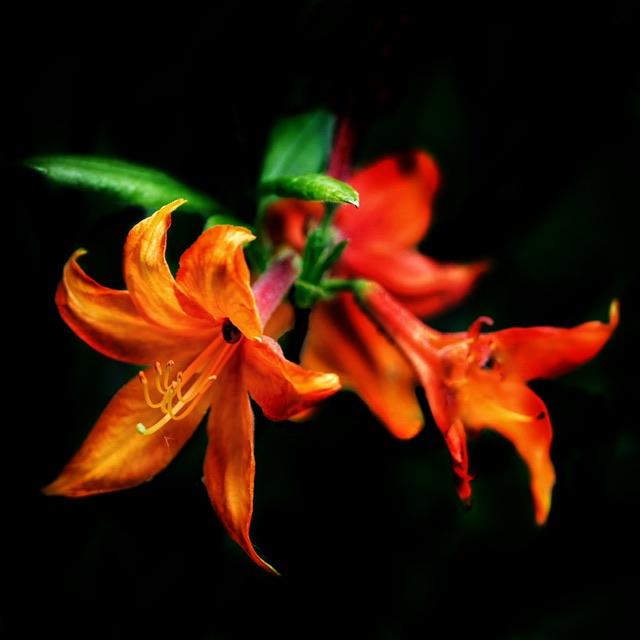
Azaleas (/əˈzeɪliə/) are flowering shrubs in the genus Rhododendron, particularly the former sections Tsutsusi (evergreen) and Pentanthera (deciduous).
Azaleas bloom in the spring (April and May in the temperate Northern Hemisphere, and October and November in the Southern Hemisphere), their flowers often lasting several weeks. Shade tolerant, they prefer living near or under trees.
They are part of the family Ericaceae.
Forget-me-not
Next up was the forget-me-not.
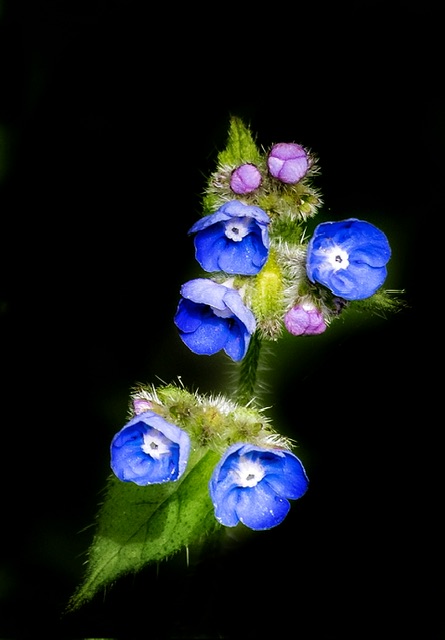
Myosotis (/ˌmaɪəˈsoʊtɪs/ MY-ə-SOH-tiss) is a genus of flowering plants in the family Boraginaceae.
The name comes from the Ancient Greek μυοσωτίς “mouse’s ear”, which the foliage is thought to resemble.
In the Northern Hemisphere, they are colloquially known as forget-me-nots or scorpion grasses.
Myosotis alpestris is the official flower of Alaska and Dalsland, Sweden. Plants of the genus are not to be confused with Chatham Islands‘ forget-me-nots, which belong to the related genus Myosotidium.
Foxgloves
As we walked further along the path through the park, we could see loads of foxgloves.
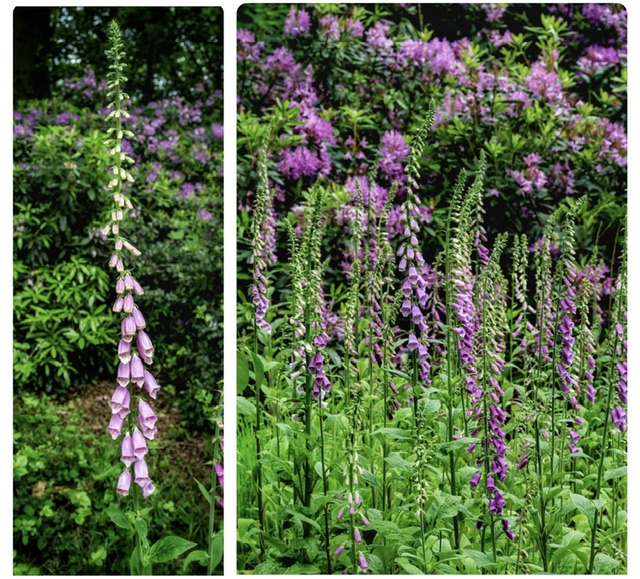
Digitalis purpurea also known as foxglove, common foxglove, purple foxglove or lady’s glove.
The plants are well known as the original source of the heart medicine digoxin (also called digitalis or digitalin).
Bees are regular visitors to the plant, often entering the flower tube to access the nectar inside. The green leaves and flowers can make a green dye.
They have a bloom time of June to September, and can grow tall, one-sided spires up to 1 and a half metres – flower spikes then turn to face the sun.
Flower colour of Digitalis can vary but most commonly you’ll find purple flowers such as this species.
These bright flower spikes of bell-shaped flowers are unique and distinctive in the UK landscape.
Making the perfect architectural flower spikes for your garden beds and borders.
Rhododendrons
Opposite to the foxgloves were what Sheringham Park is known for, the rhododendrons.
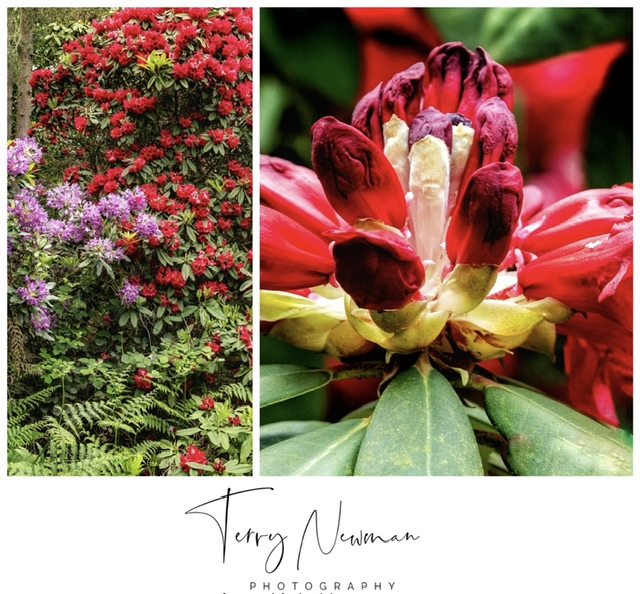
There were so many rhododendrons, it was addictive shooting images of them.
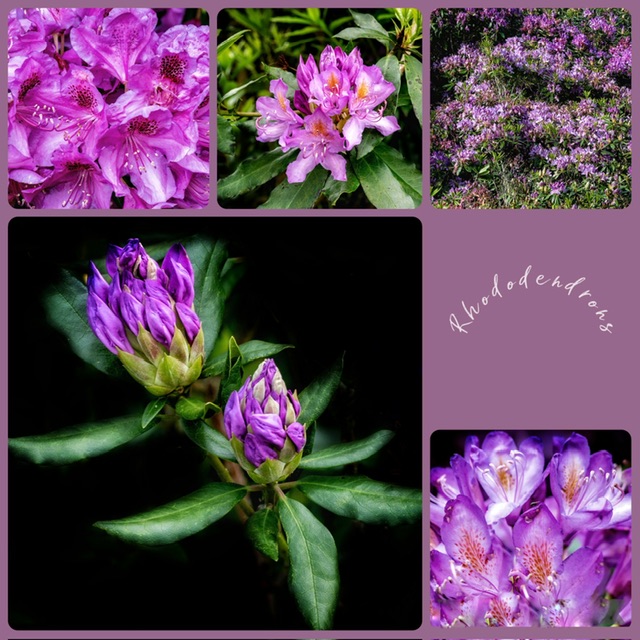
I’ve been enjoying editing these flower shots including trying to isolate the flower itself by blacking out large sections of the background.
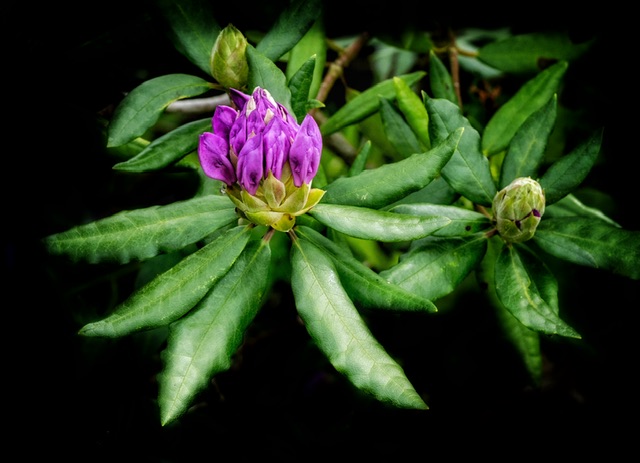
The above shot was taken at 180mm (24-120mm@120mm crop mode), f/6.3, 1/400, ISO 200.
Textures of tree bark
As I was in a creative mood, I took this shot of a tree trunk, trying to emphasise its texture.
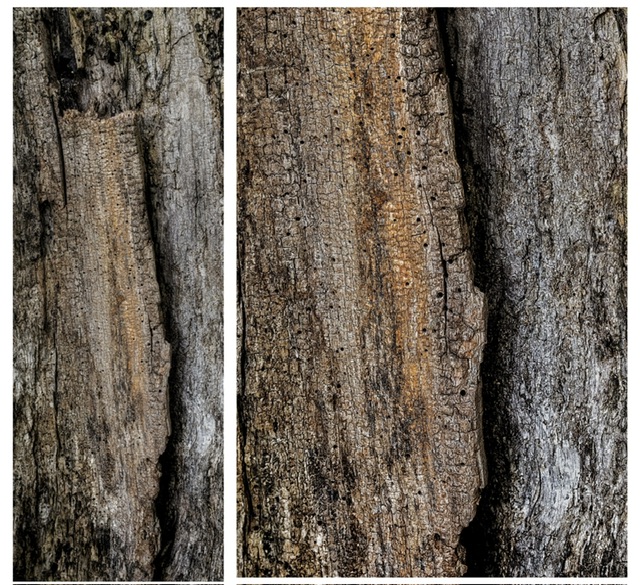
This image will never make it online, and certainly not in any competition but it appealed to me in the moment, made me think, and got me going all ‘creative’…. Oooh, oooh, suits me Sir!
And that was a wrap.
It was a lovely wander round Sheringham Park on a weekend afternoon, and the flowers at time of year are stunning.
I also enjoyed trying to force myself to stretch my creative thinking, whether it be in camera settings, composition or editing.
Onwards and upwards…